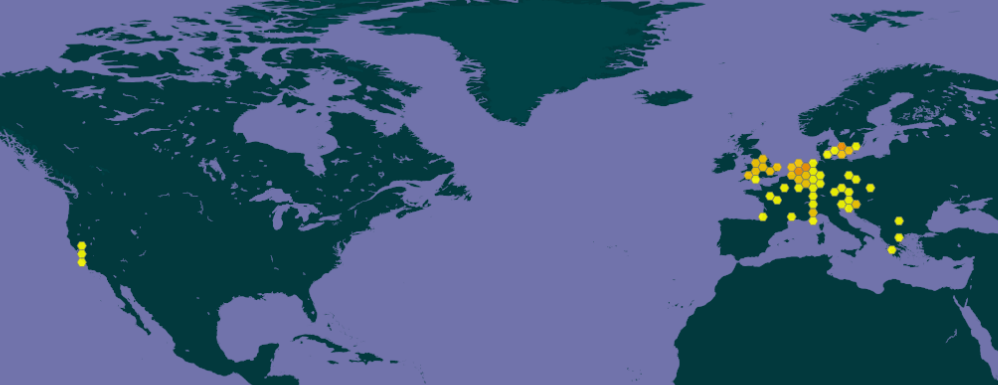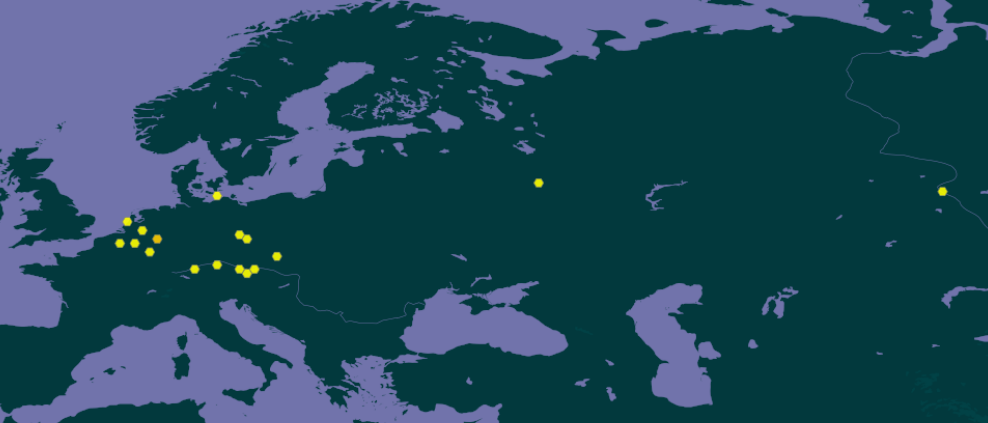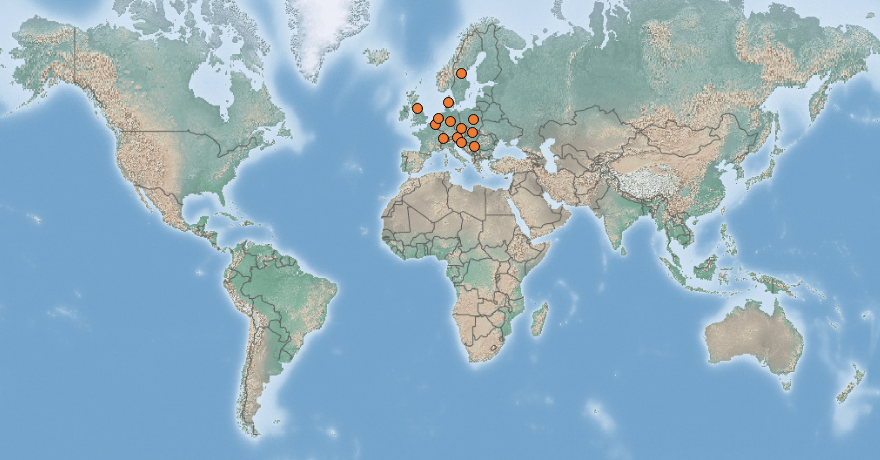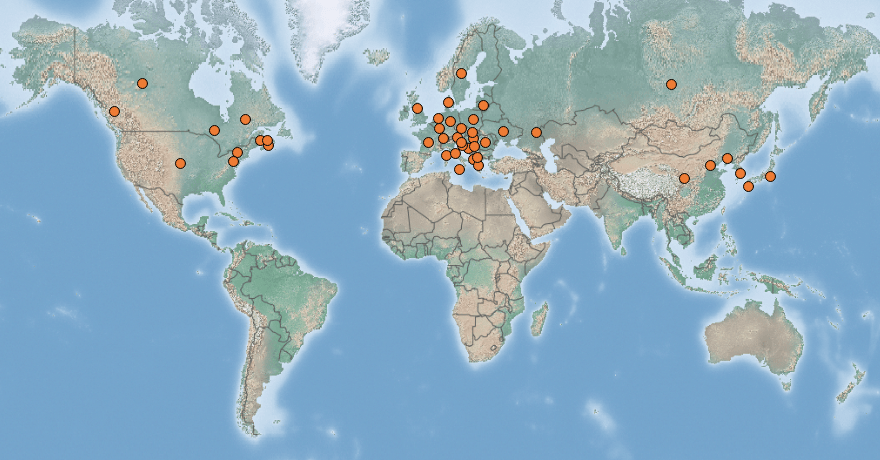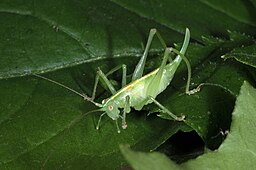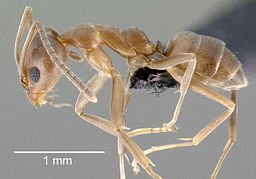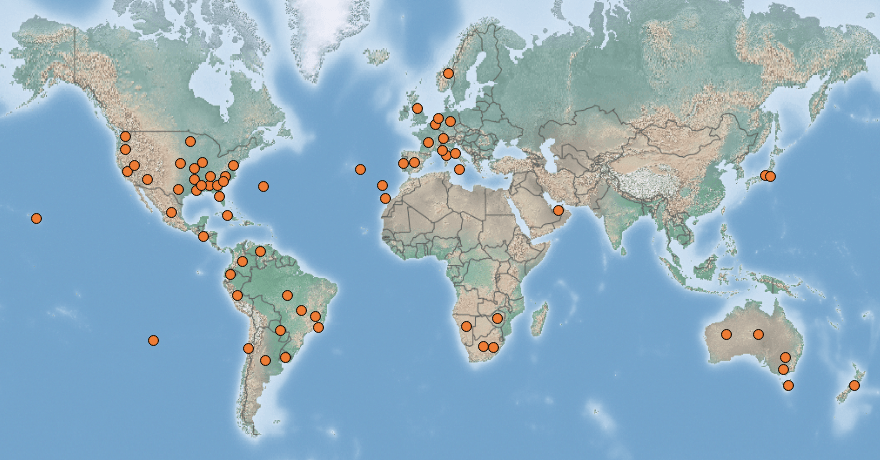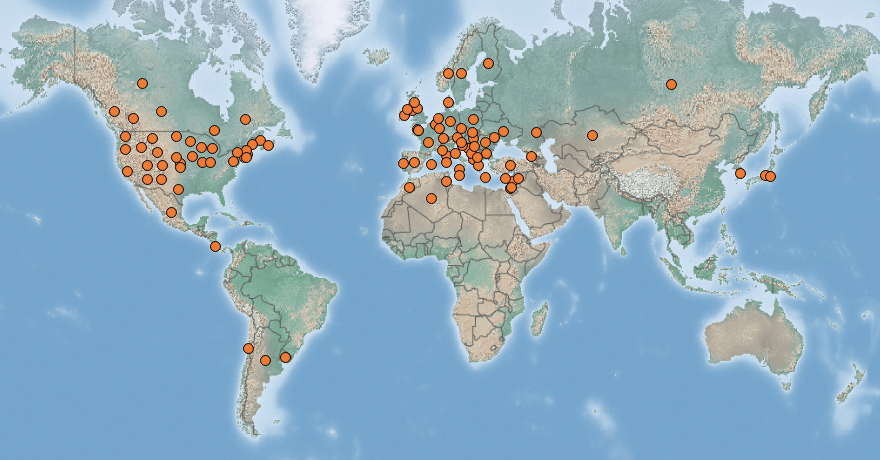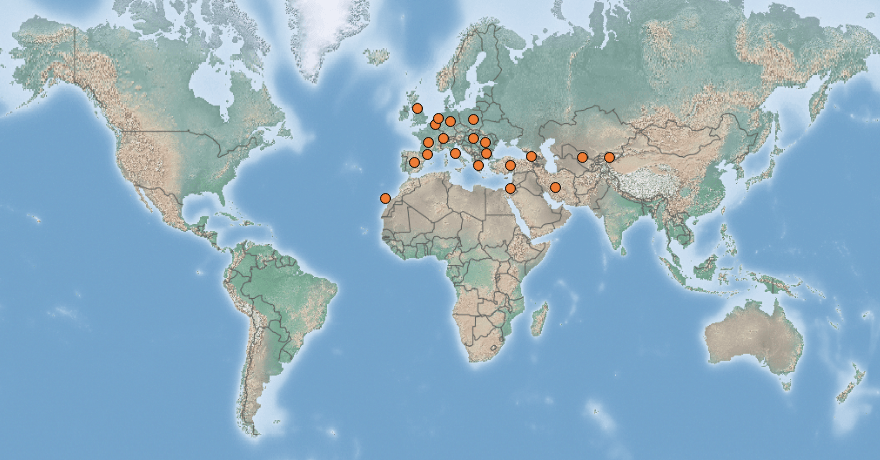 |
Horse chestnut scale | Status LU: established. 1st record: 2000. |
 |
Kinneks-Schëldlaus | Status Eur.: established. |
 |
n/a | RA: ISEIA: C3. Harmonia+: n/a. |
 |
Wollige Napfschildlaus | Wikipedia: |
 |
Koningsdopluis | Back to the list of invertebrates |
Contents
Brief description
 Pulvinaria regalis Canard, 1968 is a species of scale insect in the family Coccidae. Although it is commonly known as the horse chestnut scale, it affects other trees besides horse chestnuts as well as many species of woody shrubs. Adults are normally all female and produce eggs by parthenogenesis. The insects are thought to have originated in Asia but arrived in Europe in the second half of the twentieth century. Pulvinaria regalis is known to be hosted by 65 species of plant from 25 families. The main species of tree which act as hosts for this scale insect are horse chestnut, sycamore, maple, lime, elm, magnolia, bay and dogwood (Wikipedia contributors 2019)
Pulvinaria regalis Canard, 1968 is a species of scale insect in the family Coccidae. Although it is commonly known as the horse chestnut scale, it affects other trees besides horse chestnuts as well as many species of woody shrubs. Adults are normally all female and produce eggs by parthenogenesis. The insects are thought to have originated in Asia but arrived in Europe in the second half of the twentieth century. Pulvinaria regalis is known to be hosted by 65 species of plant from 25 families. The main species of tree which act as hosts for this scale insect are horse chestnut, sycamore, maple, lime, elm, magnolia, bay and dogwood (Wikipedia contributors 2019)
Status and distribution in Luxembourg
Records of Pulvinaria regalis Canard, 1968 in Luxembourg. Data source: Recorder-Lux, iNaturalist & GBIF, 2025-11-27.
Currently, 29 records of the horse chestnut scale are accessible through the MNHNL-mdata portal (MNHNL, iNaturalist & GBIF 2020).
Other Pulvinaria taxa
Pulvinaria vitis (L.) is the only native species of the scale louse genus Pulvinaria. Recently, three other species of this genus, P. floccifera (Westwood), P. hydrangeae (Steinweden) and P. regalis Canard, have migrated to Luxembourg, where they have become established without any problems (Schneider & Tanson 2003: 87).
Risk assessment
ISEIA protocol
C3 (3+1+2+1) (Ries et al. 2017: 69).
Harmonia+ protocol
Not assessed yet.
Worldwide distribution

GBIF, 2019: https://www.gbif.org/species/2092040
Bibliography
- GBIF, 2020. Pulvinaria regalis Canard, 1968 in GBIF Secretariat (2019). GBIF Backbone Taxonomy. Checklist dataset https://www.gbif.org/species/1652212 [accessed 2020-04-10]
- MNHNL, 2000-. Pulvinaria regalis Canard, 1968 in Recorder-Lux, database on the natural heritage of the Grand Duchy of Luxembourg. Musée national d’histoire naturelle, Luxembourg. URL: https://mdata.mnhn.lu [Accessed 2020-04-10]
- MNHNL, iNaturalist & GBIF, 2020. Pulvinaria regalis Canard, 1968 in MNHNL-mdata, online portal combining species observation from Recorder-Lux, iNaturalist and GBIF. National Museum of Natural History, Luxembourg. URL: https://mdata.mnhn.lu [Accessed 2020-04-10]
- Ries, C., A. Arendt, C. Braunert, S. Christian, A. Dohet, A. Frantz, G. Geimer, M. Hellers, J. A. Massard, X. Mestdagh, R. Proess, N. Schneider & M. Pfeiffenschneider, 2017. Environmental impact assessment and black, watch and alert list classification after the ISEIA Protocol of invertebrates in Luxembourg. Bull. Soc. Nat. luxemb. 119: 63-70. [PDF 360 KB]
- Schneider, N. & S. Tanson, 2003. Les cochenilles pulvinaires (Hemiptera, Coccidae) du Luxembourg. Bull. Soc. Nat. luxemb. 103: 87-92. [PDF 626 KB]
- Wikipedia contributors, 2019. ‘Pulvinaria regalis’, Wikipedia, The Free Encyclopedia, 26 August 2019, 11:40 UTC, <https://en.wikipedia.org/w/index.php?title=Pulvinaria_regalis&oldid=912554047> [accessed 2020-04-10]
Page content last updated on 2023-09-27.




